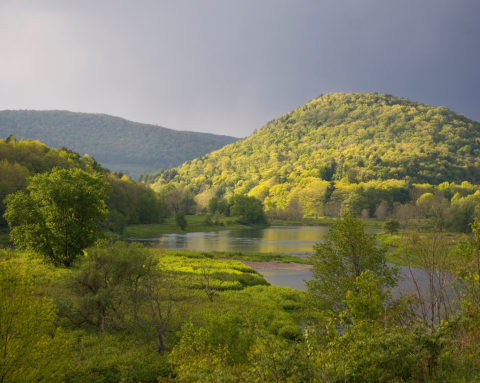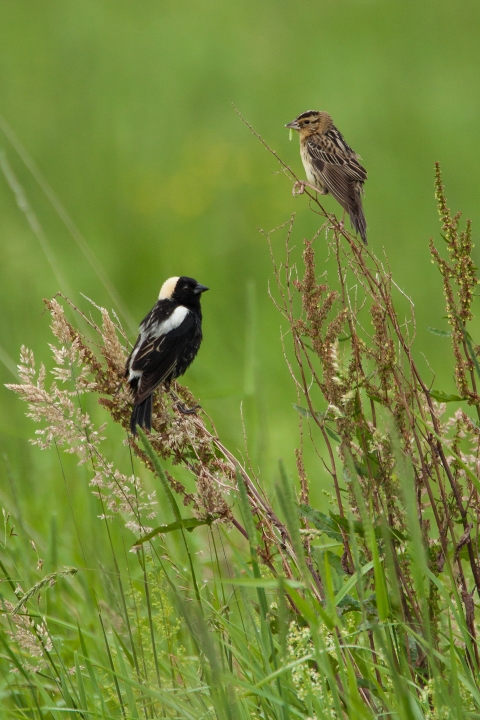Twenty-seven acres of retired farmland in Townsend, Delaware.
Two derelict dams in White Township, New Jersey.
Nearly a mile of degraded riverfront bordering a hazardous waste site in Philadelphia, Pennsylvania.
These are just some of the places in the Delaware River watershed that will soon be transformed with funding from the Bipartisan Infrastructure Law Bipartisan Infrastructure Law
The Bipartisan Infrastructure Law (BIL) is a once-in-a-generation investment in the nation’s infrastructure and economic competitiveness. We were directly appropriated $455 million over five years in BIL funds for programs related to the President’s America the Beautiful initiative.
Learn more about Bipartisan Infrastructure Law .
This week, the U.S. Fish and Wildlife Service and the National Fish and Wildlife Foundation announced the fifth round of grants from the Delaware River Watershed Conservation Fund — 36 projects that move the needle in areas key to sustaining a healthy watershed: reducing flooding and runoff, restoring fish and wildlife habitats, improving water quality, and enhancing safe recreational access for the public.
A dozen of those projects are made possible by $26 million from the infrastructure law, passed in November 2021, that will be distributed through the fund during the next five years. Funded projects will use nature-based solutions to restore fish and wildlife habitat and help communities thrive in the face of change.
Take the three sites mentioned above.
With $176,400 in funding from the law, the Delaware Department of Natural Resources and Environmental Control will restore those retired farm fields at Blackbird Creek in Townsend to create 22 acres of young forest and five acres of meadow – habitat types that are regionally rare and support wildlife at risk of steep declines, including pollinators and grassland birds.
The Nature Conservancy will use $266,100 in funding to remove the two derelict dams on the Pequest River in New Jersey, reconnecting nearly 60 miles of habitat for fish, freshwater mussels and other aquatic species, while improving water quality and safety for paddlers.
The degraded stretch of riverfront in Philadelphia might be poised for the most dramatic transformation — from a former oil refinery waste disposal site to a recreational trail and greenway.
With $90,000 from the infrastructure law, the Schuylkill River Development Corporation and partners will design a 0.64-mile extension to the Schuylkill River Trail, with a green buffer of native trees and flowering perennials to absorb runoff.
This project shows how strategic investments driven by local needs can create positive ripple effects.
More than just a trail expansion, the new greenway will link communities long cut off from the Schuylkill River by industrial land use of the riverfront.
By connecting underserved neighborhoods in Southwest Philadelphia to the heart of the city, the project will encourage sustainable investments in the area to boost the economy. The buffer of vegetation will provide natural flood insurance, reducing the risk to homes and businesses as climate change climate change
Climate change includes both global warming driven by human-induced emissions of greenhouse gases and the resulting large-scale shifts in weather patterns. Though there have been previous periods of climatic change, since the mid-20th century humans have had an unprecedented impact on Earth's climate system and caused change on a global scale.
Learn more about climate change brings more intense storms, threatening lives, homes, and public health.
But the projects funded by the Bipartisan Infrastructure Law are just one part of this success story. Along with 24 others funded by the Delaware Watershed Conservation Fund this year, they are helping transform a shared vision for the future of the watershed into reality.
Together, this year’s projects will restore more than 98 miles of habitat along rivers and streams. They will conserve and enhance 1,322 acres of wetland habitat and restore 255 acres of floodplains. They will help manage 27,105 acres of forest habitat and open 4,719 acres for public access.
Since its establishment in 2018, the fund has awarded $40.4 million to 159 projects, which have generated $59.7 million in match, for a total conservation impact of $100.1 million.
Ultimately, we know conservation success is about more than acres, miles, and dollars.
It’s about improved lives for future generations who will have access to nature where they live, cleaner drinking water, thriving fish and wildlife communities, and stronger economies, because of the investments we are making today to sustain the Delaware River watershed.









